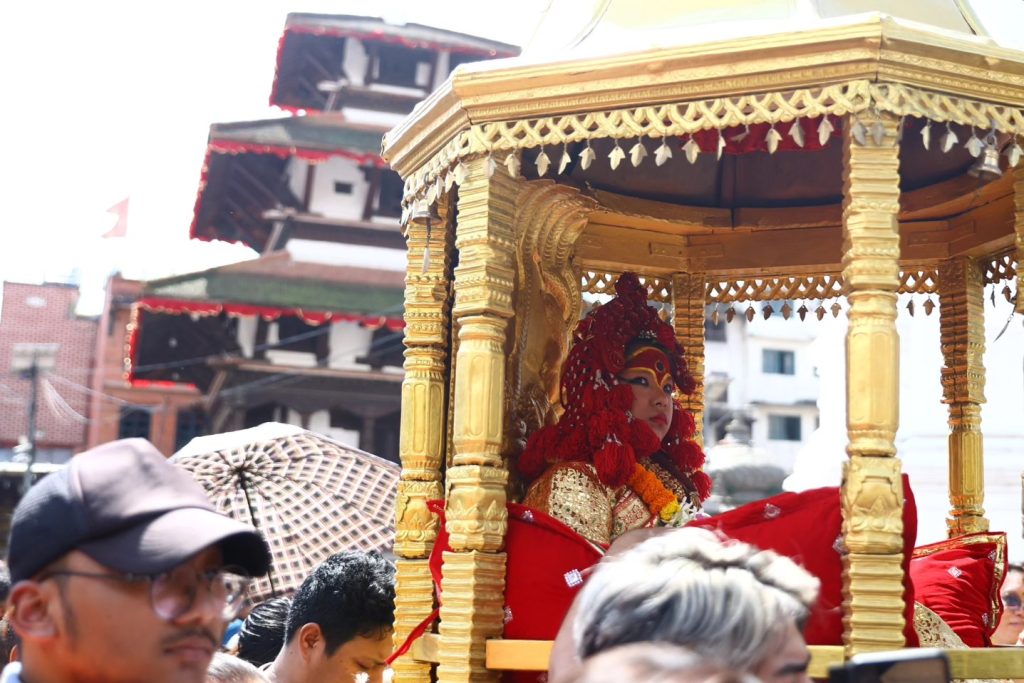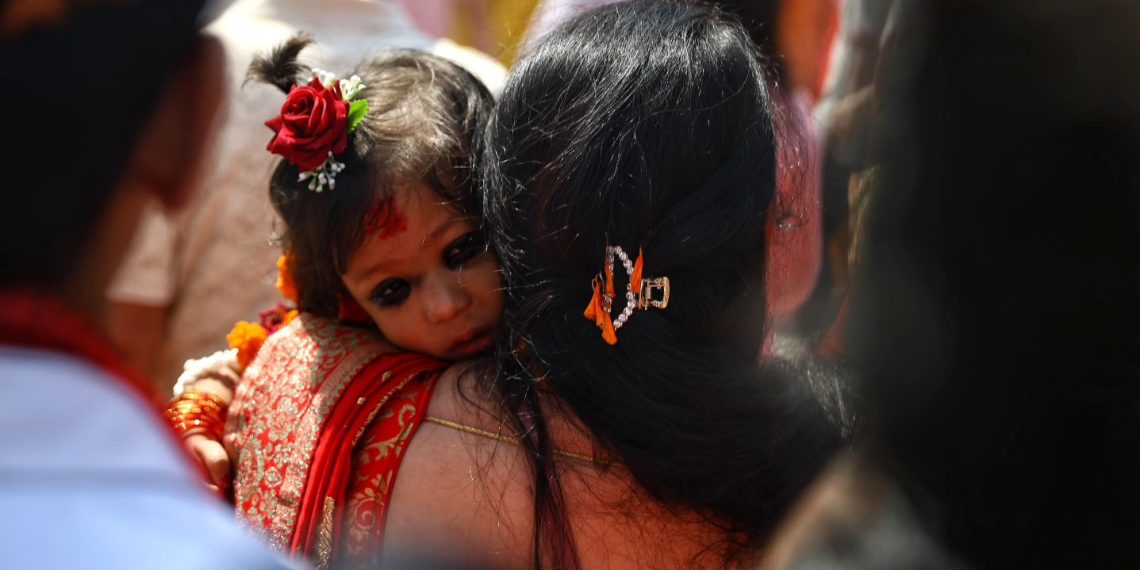This Dashain, Kathmandu officially installed a new Royal Kumari, the highest authority among the city’s many living gods and goddesses.
The outgoing Royal Kumari, Trishna Shakya, held the seat for eight years. As per tradition, a Kumari must retire before reaching menarche. Her successor has been chosen: two-and-a-half-year-old Aryatara Shakya of Itumbahal. She was be enthroned at the Basantapur Kumari Ghar (House of Kumari) on the occasion of Maha Ashtami on Tuesday. Immediately after the installation, the outgoing Kumari was ceremonially escorted home, where she will remain in divine attire for four days before formally re-entering ordinary life.

The Royal Kumari of Kathmandu is not merely a cultural symbol; she holds state significance. Once a year, during Indra Jatra, the head of state visits her, bows at her feet, and receives blessings, believing it strengthens national authority for the coming year. This practice dates back to King Prithvi Narayan Shah, who, during his 1768 conquest of Kathmandu, received blessings from the Kumari and took it as divine approval of his rule.
Candidates for the role are traditionally selected from Shakya Buddhist families of 16 designated monastic lineages. The selection process remains partially secret, even in an era of media exposure. Once chosen, the Kumari lives permanently inside Kumari Ghar, leaving only for specific festivals. Her education is conducted privately within the residence by teachers sent in from a registered school.
As Aryatara assumes the throne, Kathmandu once again enacts a centuries-old tradition in which divinity is not sculpted in stone or cast in metal, but embodied in a child.





